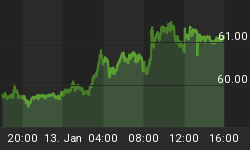The Dow has passed the 9000 barrier. This has gotta be a recovery, right? After all, "the share market is forward looking". I'm afraid these people have confused forward looking with foresight. Never look to share markets as harbingers of growth or recession. Market watchers would know this if they paid more attention to history and less to charts. The American economy, for example, had already shown distinct signs of contracting several months before the Great Crash of 1929.
Although the Dow (which was more representative of the economy in the 1930s than it is now) rose from its low of 42.84 in June 1932 to 150.24 in December 1939, an increase of 250.7 per cent, unemployment averaged 16.7 per cent for that year against 3.3 per cent for 1929 while the industrial production index (1923-25) had fallen to 92 in April and May before rising to 103 the following August.
Roosevelt's economic policies -- which were largely an extension of Hoover's -- were a disaster that only a political cultist could ignore. This was a period of unprecedented government interventionism that severely crippled the US economy and triggered a process of capital consumption.
Professor Higgs estimated that from 1930 to 1940 net private investment was minus $3.1 billion. (Robert Higgs, Depression, War, and Cold War, The Independent Institute, 2006, p. 7). Arthur Lewis calculated that from 1929 to 1938 net capital formation plunged by minus 15.2 per cent (W. Arthur Lewis, Economic Survey 1919-1939, Unwin University Books, 1970, p. 205). Benjamin M. Anderson estimated that in 1939 there was more than 50 per cent slack in the economy. (Benjamin M. Anderson, Economics and the Public Welfare: A Financial and Economic History of the United States 1914-1946, LibertyPress, 1979, pp. 479-48).
A period of capital consumption would be marked by a continuing rise in the average age of machinery. This is precisely what we find. The amount of metal working machinery more than 10 years old rose from 48 per cent in 1930 to 70 per cent in 1940, an increase of 45.8 per cent. The reason why so many people think Roosevelt restored growth is because GDP rose under most of his presidency. These people have made the error of confusing a reduction in idle capacity leading to increased production with an increase in the amount of capital. As we have seen, there was no such increase.
One could argue that from June 1932 the rise in the Dow Jones was sustainable. And a 251 per cent increase in 7 years would seem to confirm that view. The problem is that there was no real recovery, from which we should draw the lesson that a rising stock market in itself does not necessarily signal a genuine revival in economic activity that would include the resumption of the process of capital formation. Too few commentators seem to be aware of the vital importance that monetary policy plays in driving the stock market. Even fewer stress that the ideal stock market is one driven by economic growth and not monetary expansion. (Share markets, equities and monetary policy). The following charts track M1 and the Dow.


It can be seen that from its peak in 1929 the Dow rapidly fell. What is not generally known is that the Fed froze the money supply in December 1928. From January 1930 to June 1933 the money supply fell by about 33 per cent. It was not until the second half of 1933 that it began to expand again. The big break in the Dow in August 1937 is usually attributed to a monetary tightening by the Fed. But as the Fed only reduced excess or 'idle' reserves -- and then not all of them -- it follows that there must be some other cause. In fact, the Dow's crash corresponded with a collapse in industrial production the index for which dived from 115 in August 1937 to 76 in May 1938. This was the result of a massive wage push -- encouraged by the Roosevelt administration -- that put the US economy into reverse.
Although the second chart is not clear on this point the Dow has been closely tracking M1 since 10 March. (The use of sweeps has caused M1 to be greatly understated). No matter which monetary measure one uses it seem pretty clear that Bernanke's criminally loose monetary policy is now driving the markets. But with an official unemployment rate of 9.5 per cent that is set to rise to 10 per cent or even higher can Bernanke's monetary assault on the economy drive this figure down again? (Bernanke appears to be still wedded to the discredited Philips curve).
Don't count on it. Manufacturing is still comatosed and there are still economic imbalances that need to be liquidated but which Bernanke and Obama are working to keep afloat. Combine that with Obama's insane energy policy and the Democrats' rising tide of tax increases that will sweep across the economy and it is quite possible that the economy will suffer another severe downturn
And then there is the tidal wave of money that has been built up. Unless it is permanently sterilised the US will be confronted with surging inflation, a falling dollar and rising unemployment. It won't be a pretty picture.
















